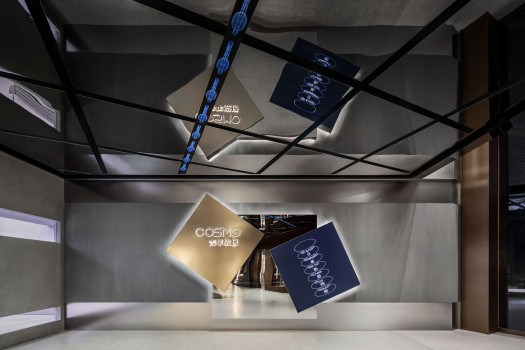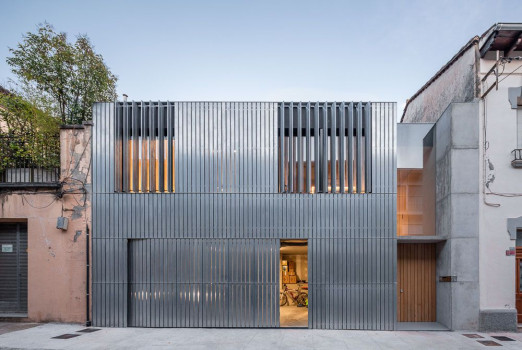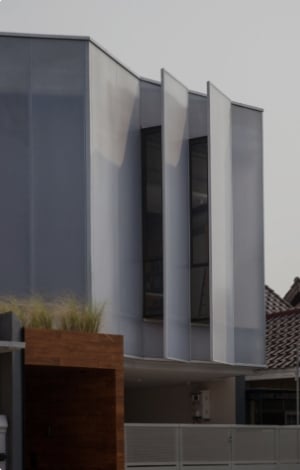Habitat ’67: Critique on a Classic & Its Modern Interpretations



With Habitat ’67, Safdie did more than just combine the two, resulting in a unique concept in urban living that will inspire generations to come. The initial master plan of Habitat ’67 was much bigger in scale—over 1,000 residences along with common amenities like a school and shop—than the built 158 houses in 12-storey interconnected structures.



The building, which has been given heritage status today, was the embodiment of Safdie’s expression “for everyone a garden”. Although the socialist underpinning of the concept is still debated in the sense of who it was actually meant for—the working class or the middle class—it will not be an exaggeration to say that it was never meant to be luxury living to be experienced by the riches of the city. Safdie truly wanted to make the experience of urban living more enjoyable for everyone, advocating for more space and light for every city dweller. However, like every architect of the generation before him, Safdie made the same mistake of thinking that good design alone is enough to translate to equality and equity in the distribution of housing.
The spiralling cost of construction made Habitat ’67 a white elephant for all the parties involved. Adele Weder, a Canadian architect and journalist, wrote in detail about the failings of Habitat ’67 as a ‘low-cost’ housing in The Walrus magazine in 2008. The high cost was mainly attributed to the structural system of the complex, which needed each component to be prefabricated in a factory that was especially set up for the project. Looking back, the idea was ahead of its time since prefabrication was many years away from becoming mainstream. However, it is poignantly clear why Safdie—a man in his twenties then with a vision—pushed for the technology even with the rising cost. Prefabrication of all the components would have helped Habitat ’67 proliferate around the world, which was the core value and vision of his thesis.
After more than five decades of Habitat ’67, many other versions or iterations have come up around the world, but not in the same way Safdie—or his thesis—would have intended.
ALTAIR RESIDENCES COLOMBO, SRI LANKA


The recently completed Altair Residences brings modular apartment living to the Indian subcontinent. The skyscraper, which appears to have one tower leaning towards the other against the picturesque backdrop of Colombo, has 400 residential units overlooking the Beira Lake. Taking its cue from the terraced gardens of Habitat ’67, Altair Residences has a communal sky garden atop the 63-storey tower.
Marketed to the ultra-rich class, the units, with areas ranging from 1,500 square feet to 4,000 square feet, are currently being sold at the price of USD500,000 to USD700,000. According to an article published by Financial Times, most of the housing market in Colombo—the capital of Sri Lanka—caters to Sri Lankans living abroad, foreign buyers and locally-based high net-worth individuals, resulting in empty housing stock along with shortage of affordable housing. Looking at the housing scenario of a developing nation like Sri Lanka, Altair Residences seems to have come far away from the original inspiration that challenged the existing housing norms and pushed the boundaries of the very idea of apartment living—it neatly replicates the architecture of Habitat ’67, but without the core values that created the architecture in the first place.
PROJECT DATA
Client
Indocean Developers Pvt Ltd
Completion
September 2021
Area
139,355 square metres
Associate Architect
Design Team 3
Structural Design Consultant
Derby Design
MEP Designer
CKR
Specialist Lighting Consultant
Studio Lumen
Vertical Transportation Consultant
Barker Mohandas
Fire Engineers
FPC
Wind Analysis Consultant
RWDI
Landscape Consultant
P Landscape
QORNER TOWER QUITO, ECUADOR


Qorner Tower is a 24-storey residential building currently under construction in the city of Quito—the capital of the South American nation of Ecuador, known for being surrounded by active volcanoes. The artistic impressions and renderings of the building appear to be a playful arrangement of cuboids spilling into terraced gardens looking to break the monotony of tall grey buildings that make up most of the modern construction in the city.
Qorner Tower does a good job of retaining the playfulness of Habitat ’67 through the play of volumes opening into terraced gardens, which are designed to eventually mimic the greenery outside and function as ‘plantscrapper’ to enable offsetting its carbon footprint later. However, there has been no data to prove how and when this will happen. For a building of its scale—127,000 square feet of built space—it seems like the project will have to do more than just natural ventilation and vertical plant wall to be a sustainable endeavour, especially in an increasingly climate-vulnerable world where the novelty of skyscrapers is soon wearing out.
PROJECT DATA
Client
Uribe and Schwarzkopf
Expected Completion
Spring 2022
Area
127,000 square feet
Design Architect
Safdie Architects
Associate Architect
Uribe and Schwarzkopf
Landscape Architect
Greenstar Landscape
HABITAT QINHUANGDAO CHINA


Habitat Qinhuangdao is a high-density housing complex situated 200 miles away from Beijing, the capital of China, between the city of Qinhuangdao and the coast of Bohai Sea. It is organised into a series-linked residential blocks along the shore. The 16-storey-high blocks are designed to accommodate the growing urban population of Qinhuangdao, who want to stay connected to the city and yet enjoy the countryside.
The complex is marketed to the burgeoning middle class of China as relief from the cramped and closed urban centres. However, the units are priced on the higher side of the spectrum, pegging the development as middle- to high-income housing. Phase II of the project will add 1,000 units distributed across two 30-storey terraced buildings, doubling the capacity of Phase I, which opened in 2017.
PROJECT DATA
Client
Kerry Properties
Expected Completion
2024 (Phase 1 of the development completed in 2017)
Design Architect
Safdie Architects
Local Design Institute
China Shanghai Architectural Design & Research Institute Co. Ltd
Landscape Architect
WAA Landscape Architects
Area
Phase 1: 152,450 square metres;
Phase 2: 244,000 square metres;
Sales office: 5,500 square metres
Façade Consultant
Konstruct West Partners
Façade Design Institute
Zhe Jiang Zhong Nan Construction Group Co., Ltd.
Interior Designers
BC&A International Ltd.; Yasha
Landscape Design Architect
SWA Group
Landscape Design Institutes
Ager Group; DQLand
Lighting Design Consultants
Lam Partners; Brandston Partnership Inc.




 Indonesia
Indonesia
 New Zealand
New Zealand
 Philippines
Philippines
 Hongkong
Hongkong
 Singapore
Singapore
 Malaysia
Malaysia








